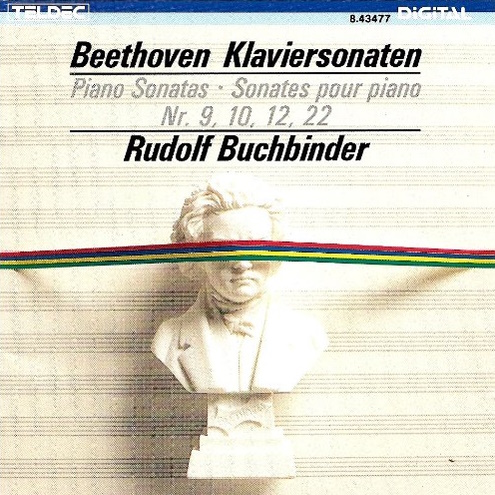 |
|
1 CD -
8.43477 ZK - (c) 1987
|
|
DIE
KLAVIERSONATEN
|
|
|
|
|
|
|
|
| Ludwig van
BEETHOVEN (1750-1827) |
Klaviersonate
Nr. 9 E-dur, Op. 14 Nr. 1 - Der
Baronin Josefa von Braun gewidmet
(Komponiert 1798/99)
|
|
11' 40" |
|
|
-
Allegro
|
5' 45" |
|
1 |
|
-
Allegretto
|
2' 56" |
|
2 |
|
-
Rondo: Allegretto comodo
|
2' 59" |
|
3 |
|
Klaviersonate
Nr. 10 G-dur,
Op. 14 Nr. 2 - Der Baronin
Josefa von Braun gewidmet
(Komponiert 1798/99) |
|
14' 24" |
|
|
-
Allegro
|
6' 33" |
|
4 |
|
-
Andante |
4' 39" |
|
5 |
|
-
Scherzo: Allegro assai
|
3' 12" |
|
6 |
|
Klaviersonate
Nr. 22 F-dur,
Op. 54 (Komponiert
1804)
|
|
11' 05" |
|
|
-
In Tempo d'un Menuetto
|
5' 09" |
|
7 |
|
-
Allegretto
|
5' 56" |
|
8 |
|
Klaviersonate
Nr. 12 As-dur,
Op. 26 - Dem Fürsten Carl
von Lichnowsky gewidmet
(Komponiert 1800/01) |
|
18' 55" |
|
|
-
Andante con Variazioni
|
7' 23" |
|
9 |
|
-
Scherzo: Allegro molto
|
2' 31" |
|
10 |
|
-
Marcia funebre sulla morte d'un Eroe
|
6' 37" |
|
11 |
|
-
Allegro |
2' 30" |
|
12 |
|
|
|
|
Rudolf BUCHBINDER,
Klavier (STEINWAY-Flügel)
|
|
|
|
|
|
Luogo
e data di registrazione |
|
Teldec
Studio, Berlin (Germania) -
novembre 1981 (Nr. 9, 10, 22)
Kongreßsaal, Villach (Austria) -
luglio 1980 (Nr. 12)
|
|
|
Original
Editions |
|
Telefunken
| 6.35596 FK - Vol.4
| 3 LPs | LC 0366 |
durata: 55' 39" · 42' 47"
· 65' 59" | (p) 1982 | ANA
| stereo | (Nr. 9, 10, 22)
Telefunken
| 6.35490 FK - Vol.2 | 3
LPs | LC 0366 | durata:
53' 24" · 41' 14" · 49'
53" | (p) 1981 | ANA |
stereo | (Nr. 12)
|
|
|
Edizione CD
|
|
Teldec |
8.43477 ZK | 1 CD | LC
3706 | durata: 56' 00" |
(c) 1987
| DDD/DMM | stereo
|
|
|
Executive
Producer |
|
Wolfgang
Mohr
|
|
|
Recording
Engineer |
|
Siegbert
Ernst (Nr. 12); Eberhard Sengpiel
(Nr. 9, 10, 22)
|
|
|
Cover design
|
|
Holger
Matthies
|
|
|
Note |
|
- |
|
|
|
|
| THE 32
PIANO SONATAS (10 CDs DMM) |
Piano
Sonatas Nr. 9 and 10, Op. 14 Nr.
1 and 2
These two sonatas of op. 14,
composed at the same time as the
”Pathétique”, were also published
in 1799. They are in the
small-scale three movement form,
cheerful, uncomplicated and
technically undemanding; Czerny
described the first movement of the
sonata in G as an exceptionally
charming and lighthearted
composition. The fact that they
were contemporaneous with the
”Pathétique” proves yet again that
any attempt to interpret a work as
the reflection of the personal
circumstances of its composer at
the time when it was created is
fraught with dangers. If the
”Pathétique” is to be understood
as a tragic revolt against
Beethoven's incipient deafness,
how can this be reconciled with
the calm serenity of op. 14,
written at the same time? Style in
music simply cannot always be
related to the frame of mind of
its composer, for all that bad
exegetical literature still makes
this claim; like form and genus in
music, it has its own tradition.
Conceivably the reduced rechnical
problems (the two even easier
sonatinas of op. 49, written in
1796, were, after all, not
published until 1805) are to be
understood as a compliment to the
dedicatee, the Baroness Braun, who
is not known to have been a
particularly distinguished
pianist. Her husband was, however,
at that time deputy director of
Vienna's two imperial court
theatres, and this may throw some
light on the purpose of the
dedication. Soon afterwards
(1801-02) Beethoven arranged op.
14, No. 1 for string quartet,
writing full of pride to the
publisher “I know that nobody else
can follow in my footsteps as
easily as I can.”
Piano Sonata Nr. 22 F-dur, Op.
54
This short work, written in 1804,
contrasts strangely with the two
great, quasi-symphonic sonatas
opp. 53 and 57, between which it
is placed chronologically. In some
respects it follows on the
experiments of opp. 26 and 27,
since neither of its two movements
is in true sonata form. The first
movement consists of two sharply
contrasting elements: a short
exposition, strongly reminiscent
of the minuet style of a past age,
almost a stylistic quotation,
Czerny rightly referred to its
old-fashioned character, and this
is borne out by the anachronistic
marking ”in tempo d’un Menuetto”
in place of the more usual ”in
tempo di Menuetto”. The longish
middle section is most certainly
not a trio, but more like a
rumbustious orchestral scherzo
with its fierce sforzato accents
going against the grain. No less
strange is the second movement.
Although the pattern of its motion
- incessant semiquaver figuration
in 2/4 time - is the same as that
of the last movements of opp. 26
and 27, No. 1, its form cannot be
labelled, instead, as in a
kaleidoscope, new configurations
constantly come into existence,
wandering off into the most
distant keys imaginable, all
arising out of a minute seminal
phrase, the broken chords of the
first bar. This movement is a fine
example of Beethoven's masterly
economy of material. Once again,
contemporary critics did not know
what to make of such
”experimental” music, a reviewer
of the first edition, though he
could not fail to recognise its
original inspiration and
unmistakeably mature harmonic art,
went on to say that unfortunately
it was again full of a strange
waywardness. Even Beethoven's
admirer Wilhelm von Lenz,
convinced that this two-movement
sonata was incomplete, wrote, as
late as the 1850s: "We have yet to
meet anyone who has found the
torso of op. 54 at all to his
liking."
Piano Sonata Nr. 12 As-dur, Op.
26
This work and the two sonatas of
op. 27, both subtitled ”quasi una
Fantasia," were all written in the
period 1800/01 and have in common
departures from the traditional
sonata form. This applies
particularly to the first
movements: in the two sonatas of
op. 27 Beethoven used a free
ternary form, whereas op. 26
begins with a set of variations.
Superficially Mozart's great Sonata
in A, K. 331, the first movement of
which is also an Andante con
variazioni, provides the model;
but Beethoven's conception of the
principle of variation, cast for
the first time in a new mould in
op. 26, stretches far beyond the
innocent and cheerful
embellishments of the past. These
are "character variations” in that
each piece has its own,
unmistakeable features. In this
opening movement of op. 26
Beethoven explored, as though for
the first time, the possibilities
inherent in the variation form
which, shortly afterwards (in
1802), were presented in the two
sets of variations op. 34 and op.
35 (the ”Eroica” Variations) "in
an entirely new manner,” as he
proudly wrote to his publishers.
The second substantial departure
from the sonata model in op. 26 is
the replacement of the slow
movement by a ”marcia funebre,”
i.e. a funeral march, subtitled
”sulla morte d'un Eroe” ("on the
death of a hero”). While in the
”Eroica” (subtitled ”to celebrate
the memory of a great man”) actual
references to Napoleon, the
contemporary hero of world
history, and the tradition of
depicting battles in music were
interwoven in an overall poetic
impression, op. 26 cannot be
described as a “heroic” sonata. So
far no clues have been discovered
as to Beethoven's choice of a
funeral march, nor about its
subtitle. Nonetheless the movement
soon became famous, it was
published on its own in the same
year as the first edition of the
sonata proper - 1802 - and has
continued to appear in that form;
Beethoven himself orchestrated it
in 1815 as incidental music for a
play; and after his death in 1827
Ignaz Ritter von Seyfried
published an arrangement of the
piece with added vocal quartet,
entitled ”Beethoven’s funeral.”
In complete contrast, this severe,
solemn march is followed by a
deliberately lighthearted finale
rippling along in ceaseless
semiquavers. This sonata, like the
”Pathétique” op. 13 and the Trios
op. 1, is dedicated to Prince Carl
von Lichnowsky, Beethoven's most
important patron, of whom he said
in 1805: "He really is -
exceptionally for one in that
position - one of my most faithful
friends and supporters of my art.”
|
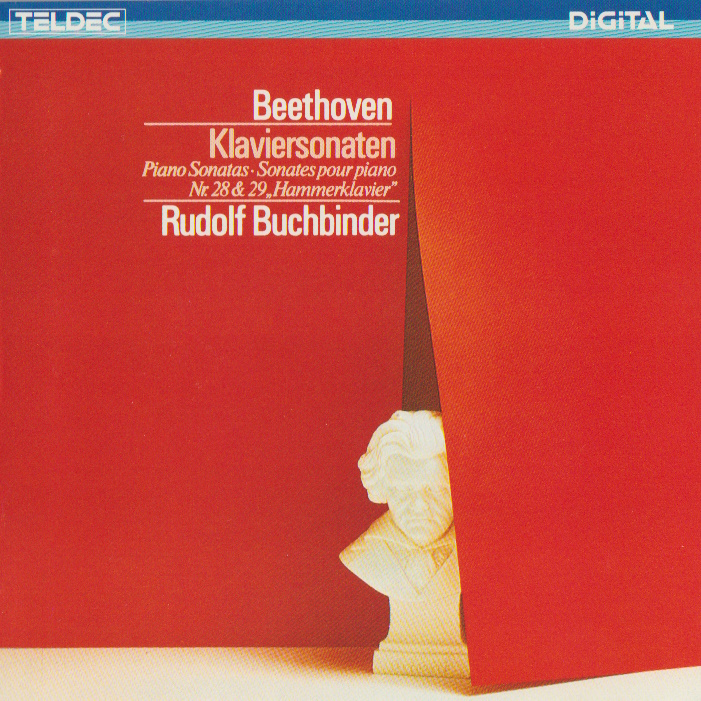
1 CD - 8.42761 ZK - (c) 1984
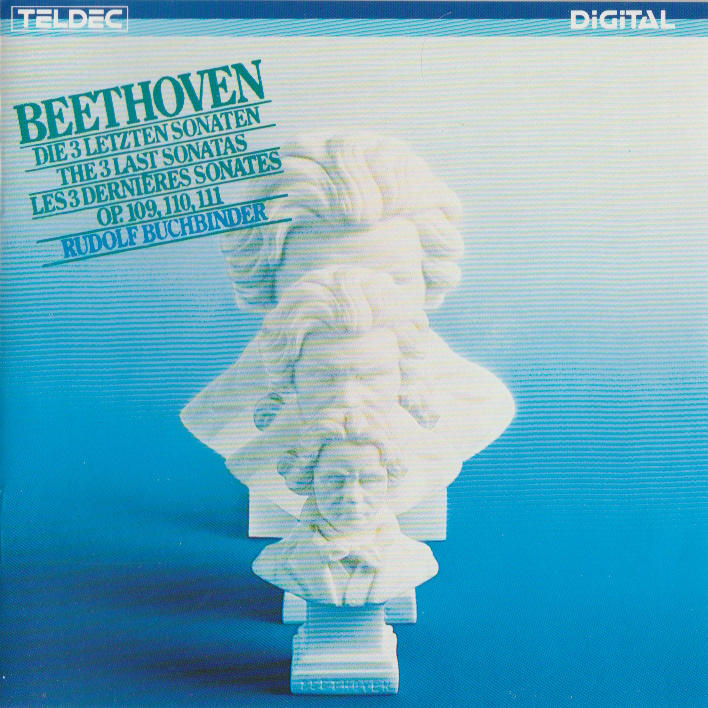 1 CD -
8.43027 ZK - (c) 1984
1 CD -
8.43027 ZK - (c) 1984
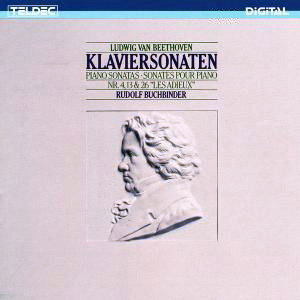
1 CD -
8.43206 ZK -
(p) 1985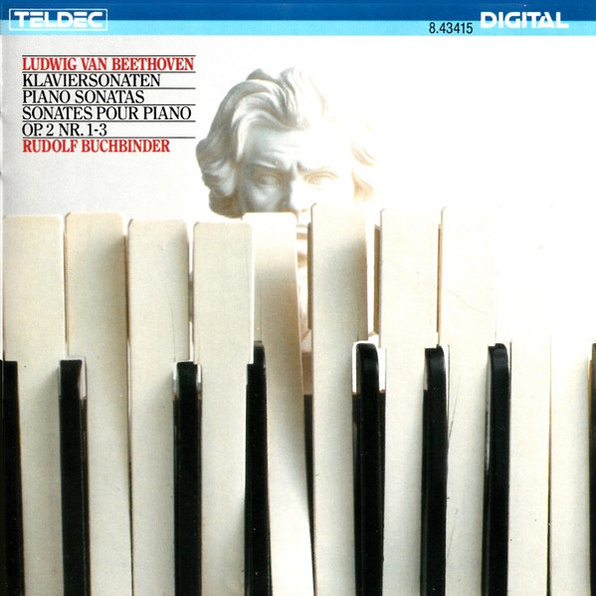
1 CD - 8.43415
ZK - (p) 1986

1 CD - 8.43477
ZK - (p) 1987
|
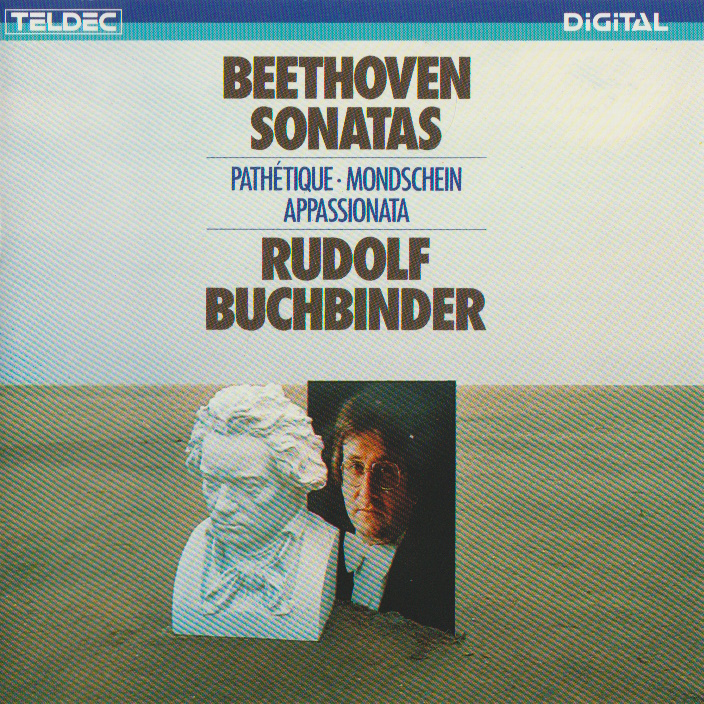
1 CD - 8.42913 ZK - (c) 1983
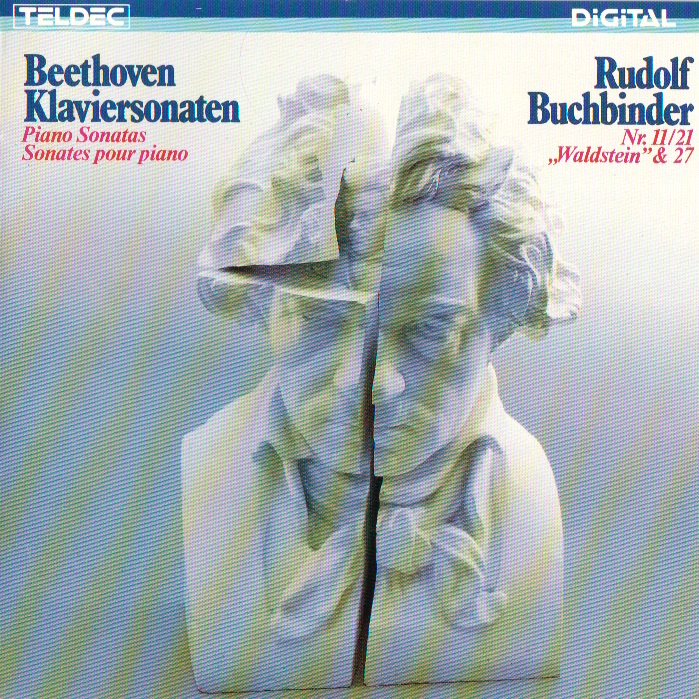
1 CD - 8.43111 ZK - (p)
1985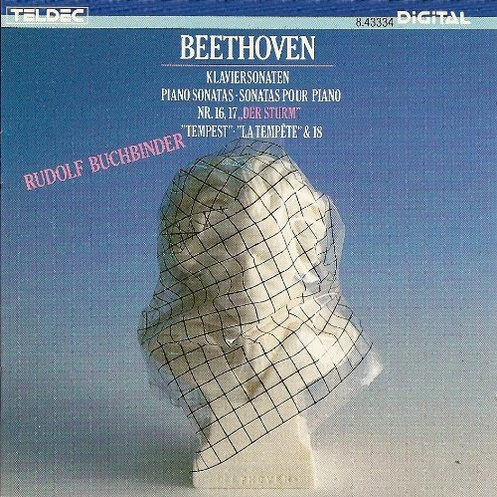
1 CD - 8.43334 ZK
- (p) 1986
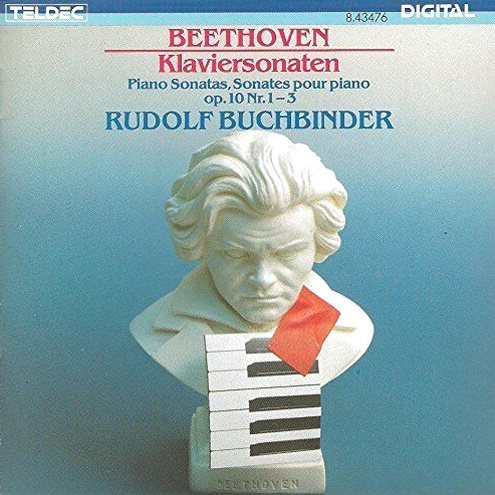
1 CD - 8.43476
ZK - (p) 1987

1 CD - 8.43478
ZK - (p) 1987
|
|
|
|
|